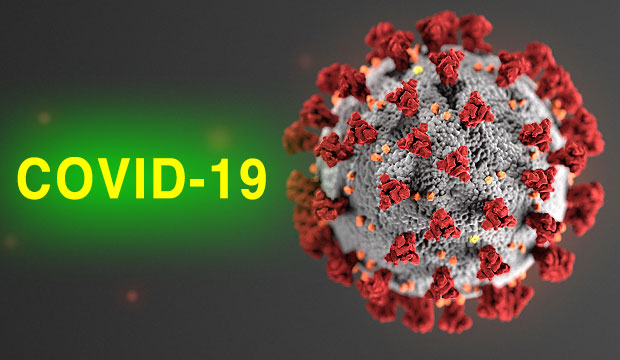Apple users wondering if they’ve caught COVID-19 can now ask digital assistant Siri for advice.
The company on Saturday rolled out a self-screening feature that allows users to ask, “Hey Siri, do I have the coronavirus?” Siri then takes them through a questionnaire prepared by the U.S. Centers for Disease Control and U.S. Public Health Service to determine if they’re exhibiting symptoms of the disease, such as fever, dry cough, and shortness of breath — or if they’ve had contact with someone with the virus.
If users indicate their symptoms aren’t extremely life-threatening, Siri instructs them to stay at home and avoid contact with other people, wash their hands frequently and thoroughly, and maintain social distancing — that is, a separation of six feet between people. If the symptoms persist, they’re advised to contact a physician.
For extreme and life-threatening cases, Siri recommends a call to 911.
The app doesn’t delve into the realm of diagnoses.
“There are a number of symptoms that could be COVID-19 or something else,” explained Seth Martin, MD, MHS, an associate professor of medicine at Johns Hopkins School of Medicine in Baltimore.
“The only way to make a real diagnosis is to have testing performed to determine if those symptoms are actually due to COVID-19,” he told TechNewsWorld. “An app can’t do that.”
In addition to the questionnaire and advice, Siri provides App Store links to telehealth applications that could include virtual consultations with medical professionals.
Team CDC and Microsoft
Also on Saturday, the CDC announced its Coronavirus Self-Checker, which is powered by Microsoft’s Healthcare Bot service.
The chatbot is designed to screen Americans unsure about seeking medical care for COVID-19. In addition to asking questions based on CDC guidelines, the bot provides links to information and local health department contacts. However, it does not have information about coronavirus testing sites or treatment recommendations other than to stay at home and take care of yourself — and, in severe cases, dial 911.
“This is most useful for the ‘worried well,'” said Catherine Troisi, an infectious disease epidemiologist at the UTHealth School of Public Health in Houston.
“Those are people who are not sick but concerned that they may be,” she told TechNewsWorld. “It lets them — if they’re not running a fever, don’t have a dry cough, no shortness of breath — release some of their anxiety.”
The Healthcare Bot service is designed to address some of the critical needs of frontline responders to the COVID-19 pandemic, noted Hadas Bitran, group manager at Microsoft Healthcare Israel, and Jean Gabarra, general manager at Microsoft’s Health AI, in an online post.
“In particular, the need to screen patients with any number of cold or flu-like symptoms — to determine who has high enough risk factors to need access to limited medical resources and which people may more safely care for themselves at home — is a bottleneck that threatens to overwhelm health systems coping with the crisis,” they wrote.
Microsoft’s Healthcare Bot service uses artificial intelligence to screen patients and free up medical personnel to provide critical care to those who need it, Bitran and Gabarra explained.
The bot, which runs in Microsoft’s Azure public cloud, can be customized for the needs of individual organizations. In addition to the CDC, healthcare providers using the service include Providence, which serves seven Western states; Novant Health, serving four states in the Southeast; and Virginia Mason Health System, which serves the Pacific Northwest.
Watch Your Privacy
Symptom checkers can benefit both the medical system and consumers, noted Michael Arrigo, a HIPAA expert witness with No World Borders.
The tools can gather valuable epidemiology data about an epidemic. However, data collected by a checker needs to be stripped of identifying information so it can’t be traced back to individual patients, he cautioned.
For consumers, the checkers can be a convenient way to obtain data for their personal symptom logs, as well as a useful diagnostic for a layperson with limited medical knowledge.
“Convenience and education are great benefits of these checkers,” Arrigo said.
While potentially beneficial, Arrigo recommended that both Apple and the CDC give consumers more information about the apps before they start using them.
“The apps are well-intentioned, but they could have the unintentional consequence of disintermediating the patient from their physician, who is the best source for information,” he said.
“Because the prevailing opinions are that symptoms can take several days to appear in an infected person, these apps are not too useful at identifying some infected contagious people and could lead to a false sense of security,” Arrigo added.
“If the intent is to relieve a potentially overwhelmed primary care front line of defense, a big disclosure needs to go up front, stating that a consumer should check their symptoms multiple times because symptoms can take several days to appear,” he said. “In the interim, you could be unwittingly exposing others during that incubation period.”
Data gathered by the symptom checkers represents personal health records under federal law, which are subject to regulation by the Federal Trade Commission and the U.S. Department of Health and Human Services, noted Arrigo.
The CDC does not share any of the personal information submitted to the Coronavirus Self Checker with Microsoft, reported Nextgov, a publication that covers government and technology. Microsoft provides the bot, but the CDC owns and maintains the checking tool.
Use Common Sense
Some consumers are creating their own symptom checkers based on information they’re gathering online, noted Michael Cannon, director of health policy studies at the Cato Institute, a public policy think tank in Washington, D.C.
Symptom trackers from authoritative sources give consumers a better alternative to the do-it-yourself approach.
“Done properly, they can lessen people’s fears, suggest constructive actions people can take, perform at-home triage, and relieve the strain on the health sector,” Cannon told TechNewsWorld.
“As always, people should only take health advice from sources who know their stuff, like the infectious disease experts at major health systems or government public health agencies,” he cautioned.
“Like Dr. Seuss said, ‘Do a lot of spitting out the hot air, and be careful what you swallow,'” Cannon added.
People should also use common sense, said UTHealth’s Troisi. “If someone in your house has been diagnosed with coronavirus and you start having symptoms, and the symptom checker says you don’t need to be tested, it might be a good idea to ignore that advice.”























































